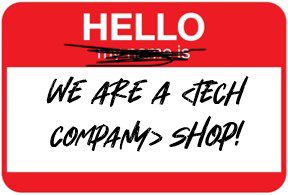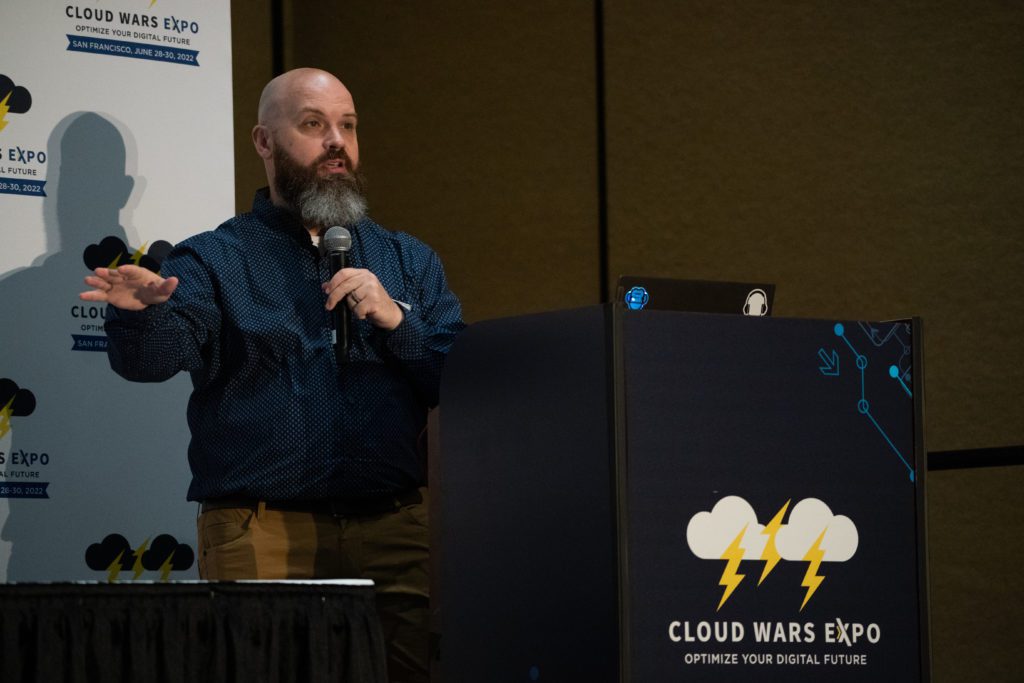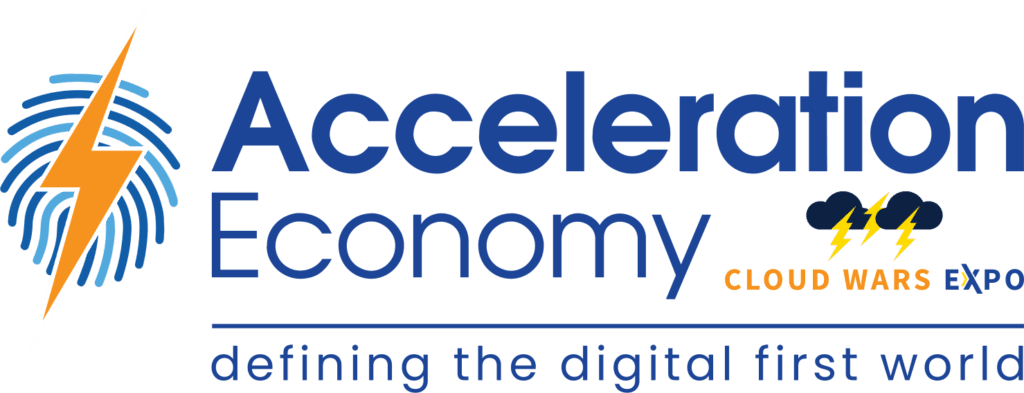Going into Cloud Wars Expo, I kept an open mind on what to expect. This really helped me leave with what to consider and what really stood out — which was a lot! Yes, many people came out of curiosity as this “different” event unfolded, but I sensed this was the beginning of a new way of flooring events and challenging tech companies with their message to decision-makers.
Further, the conversations with many leaders, both ad-hoc and through many News Desk interviews, brought to the surface several core thoughts that stuck with me.
Lessons From the Past Shaped My Takeaways for the Future
Several years ago, I used to work for a medical device manufacturing company. Being a heavily regulated industry, it seemed that an auditor was always in the building. As such, we all understood that processes were vitally important and a necessary part of daily operations.
In order to ensure all devices operated correctly and met the stringent requirements, we had a separate part of the facility dedicated to testing. The devices would go through a very similar assembly process but were marked and used for testing purposes only.
So, one Monday morning, I was walking through one portion of the facility and was hit by the most atrocious smell. I couldn’t figure out what it was or where it was coming from and proceeded to inform the operations manager of that part of the facility.
After the issue was investigated, it was discovered that there was a breakdown in the process. You see, as part of the testing process, the devices had to be tested on something, and that something was…pig hearts. This meant that because of a process failure, a pig heart was left out all weekend and became the new scent for a few days.
Had there been a solution in place to prevent this from happening in the first place, we would all have been spared the nose assault. Yes, you may be saying, “Wait, wasn’t the process, the solution?” Well, you are partially right, but a combination of People + Technology helped with alerting the right people that the pig heart was left out and could have been put away properly.
For me, this example showcased three things that I took away from Cloud Wars Expo 2022:
-
People trying to make critical decisions need to be aware of potential issues.
-
The pig heart was vital to a process and could have led to a different decision on how the devices were built or led to a new idea. But, in reality…
- Oops, someone forgot to put it away – or –
- Oops, person 1 forgot to inform person 2 they needed to examine it
-
The pig heart was vital to a process and could have led to a different decision on how the devices were built or led to a new idea. But, in reality…
-
A single technology, technology stack, or technology alone is not the answer.
- Technology was used to test the devices to see if they worked, but was there technology in place to ensure the heart was put away? Or was needed for the next step, but never arrived?
- The technology wouldn’t have known that a person was done with the pig heart.
-
Important data was missing and impacted downstream decisions.
- Maybe, if the data was required to be input into a system, but wasn’t, the system could have alerted the right people that there was a process breakdown.
- Data for the subsequent steps was missing to make critical decisions.
People + Technology – Pork = Success

Over the past 20-plus years, I have been to many tech conferences of all sizes and types. But they all had something in common: They were hosted by a single company and showcased that company’s tech and people.
Don’t get me wrong, there is a time and place for tech conferences like this. It’s good for people in all roles to see what is coming. For developers, it’s good to see new functionality and extensibility on which they can create something. For end users, it’s seeing easier ways to do something that simplifies their job and reduces redundancy. And for decision-makers, it’s a chance to confirm that they made a worthwhile investment, as well as to learn new ways to leverage the solutions.
However, when Cloud Wars Expo 2022 started, it was a breath of fresh air. The event brought the largest tech companies on the planet together so that CXOs and other decision-makers could understand how to navigate a multi-cloud/hybrid cloud world.
Furthermore, Cloud Wars Expo brought to life the first-person perspectives from real-world practitioners of cybersecurity, leadership, data, artificial intelligence, supply chains, databases, and industries.
This meant that the people making decisions based on the technology, and the people who created the technology came together and didn’t talk about the bits and bytes of the technology. Instead, they spoke about WHAT the technology was by throwing out the B.S., WHY the technology was necessary, HOW technology should be used, and WHO should be leveraging the technology.
Bottom line: The topics and discussions were more about the business and people of technology than the technology itself.
Hello! We Are A <insert tech company name> Shop!

I have been in this space long enough to have heard the phrase, “We are a <tech company> shop!” Prior to the rise of cloud technology, this was a well-understood phrase. It was expensive to put one type of technology solution in place, but it was even more expensive to put multiple tech solutions in place and keep them in sync.
Fast-forward to today. Cloud technology is the norm and is no longer a head-scratching discussion. The conversation has shifted from, “What is this cloud thing?” to “How can I leverage the cloud to stay competitive?”
What Does All of This Mean?
Cloud Wars Expo made it completely clear: One tech stack will no longer cut it. We live in a multi-cloud/hybrid cloud world, which means organizations need composable solutions that are industry-specific and extensible to meet unique needs. Further, the tech companies that create these solutions need to be open to playing nice in the same sandbox or customers will go somewhere else.
Today, it’s common for your cloud ERP solution to be from one company, your CRM from another, your analytics tools from another, and your cloud database solution from yet another company. And they all talk to each other to provide the right insights to the right people at the right time.
This means that CXOs at the event spent less time talking about how solutions could talk to each other and more about driving outcomes to stay competitive.
Bottom line: If you still have a monolithic technology mentality, you will fail. Your organization needs to have a strong polylithic architecture — and CXOs who can drive the vision with this operating model.
Give Me Data or Give Me Death!

A major part of Cloud Wars Expo was the laser focus on data. For me, two aspects stood out:
-
Cloud Database Battleground:
- On Day 1, Oracle, Cockroach Labs, and Redis literally battled it out in 20-minute sessions showcasing their solutions for data, privacy, access, aggregation, and simplicity.
- Data + AI Track:
- Not to play favorites, but as the host of this track, I loved the sessions as they covered more about the power of data, harnessing data, data culture, or being data-driven than about the data itself.
- BONUS: Industry Cloud Battleground:
- Wait, this was about data too? Yep. This challenged each vendor to answer 5 questions with one of them being focused on enabling customers to pull together data from across all facets of not only a specific industry but also related operational areas.
The undercurrent here was not about how you get one system to talk to another to ensure the data is good, but about the impact of data throughout the organization. This reminds me of the Sherlock Holmes story (“The Adventure of Silver Blaze”) where the dog not barking led to the solution of the crime. It was the fact that the dog recognized the stranger and did not bark, whereas it would have with an unknown person.
This situation is like CXOs who get comfortable with data (dog not barking) that makes them or their company look good. But, when the data shows something very uncomfortable (dog barking), then it’s an all-out effort to put the data (barking dog) somewhere where it’s not noticed.
I’m reminded of a podcast interview/conversation I had with fellow Acceleration Economy Analyst and 3x CMO, Scott Vaughan, where we talked about “Data Culture and Accepting Uncomfortable Truths.” This theme was amplified at Cloud Wars Expo through Tony Uphoff in his session “Becoming a Data-Driven CXO,” where we learned that we should stop the vanity metric madness, and realize that CXOs should be okay with changing course because of new data.
This was further examined by Tamar Shapiro in her session “Using Data to Accelerate Critical Decisions.” Tamar dove into defining your “north star” to measure success and drive a culture of objective decision-making and openness.
Bottom line: Data is not your friend or foe but should be treated with respect and objectivity. This means CXOs should understand how to leverage data to drive decisions. Otherwise, it’s a question of who’s flying the ship as it could crash and burn with everyone on board.
Closing Thoughts
As a conference veteran, I had become desensitized as each new event was similar to the last. You could almost walk into the event blindfolded and know where to go and what to expect. Sad, really.
But, Cloud Wars Expo shook up those notions and put many people and vendors in a place of uncertainty. They came with their A-game and delivered it — but it was veiled with the past, with old thinking. This doesn’t mean that each session was bad or the people that presented did a horrible job. However, it meant that they were forced to rethink how they conveyed the message. They couldn’t reach into their back pocket and say, “Oh, I’ve done these hundreds of times. I’ll just change a few words and pictures, and I’ll be good to go.”
Nope. This won’t fly.
Cloud Wars Expo 2023 will bring all this into sharper focus for attendees. Why? Because they now know what to expect and will know which companies guide them on their path forward.








